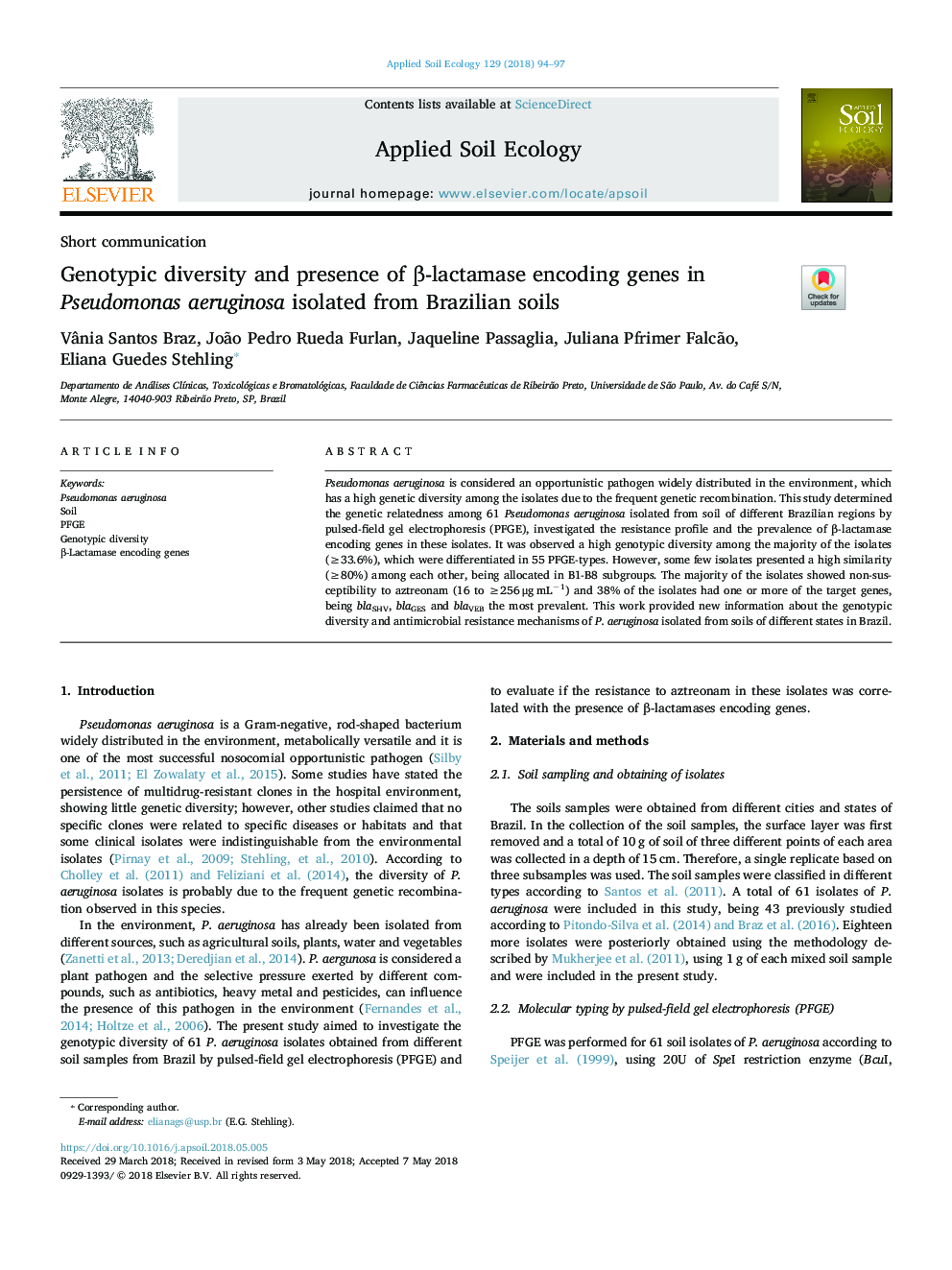| Article ID | Journal | Published Year | Pages | File Type |
|---|---|---|---|---|
| 8846608 | Applied Soil Ecology | 2018 | 4 Pages |
Abstract
Pseudomonas aeruginosa is considered an opportunistic pathogen widely distributed in the environment, which has a high genetic diversity among the isolates due to the frequent genetic recombination. This study determined the genetic relatedness among 61 Pseudomonas aeruginosa isolated from soil of different Brazilian regions by pulsed-field gel electrophoresis (PFGE), investigated the resistance profile and the prevalence of β-lactamase encoding genes in these isolates. It was observed a high genotypic diversity among the majority of the isolates (â¥33.6%), which were differentiated in 55 PFGE-types. However, some few isolates presented a high similarity (â¥80%) among each other, being allocated in B1-B8 subgroups. The majority of the isolates showed non-susceptibility to aztreonam (16 to â¥256â¯Î¼gâ¯mLâ1) and 38% of the isolates had one or more of the target genes, being blaSHV, blaGES and blaVEB the most prevalent. This work provided new information about the genotypic diversity and antimicrobial resistance mechanisms of P. aeruginosa isolated from soils of different states in Brazil.
Related Topics
Life Sciences
Agricultural and Biological Sciences
Ecology, Evolution, Behavior and Systematics
Authors
Vânia Santos Braz, João Pedro Rueda Furlan, Jaqueline Passaglia, Juliana Pfrimer Falcão, Eliana Guedes Stehling,
